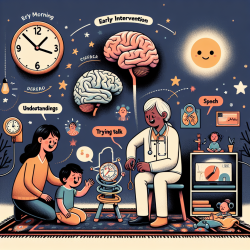Introduction
In the ever-evolving landscape of education, technology has become an indispensable tool, particularly in the realm of speech therapy. As a Special Education Director, I have witnessed firsthand the transformative power of technology in providing effective and accessible speech therapy services. This blog aims to provide Speech Language Pathologists (SLPs) working in schools with a detailed exploration of how technology can be harnessed to enhance speech therapy practices, with a focus on telepractice and support for students with autism.
The Role of Technology in Speech Therapy
Technology has revolutionized the way speech therapy is delivered, making it more accessible and flexible. With the advent of online platforms and telepractice, SLPs can now reach students in remote areas and provide services that were previously limited by geographical constraints. This is particularly beneficial for students with autism, who may require consistent and specialized interventions.
Benefits of Speech Therapy Telepractice
Telepractice in speech therapy offers numerous advantages:
- Accessibility: Students in rural or underserved areas can access quality speech therapy services without the need for travel.
- Flexibility: Online sessions can be scheduled at convenient times, accommodating both students' and therapists' schedules.
- Consistency: Regular sessions can be maintained regardless of external factors such as weather or transportation issues.
- Engagement: Interactive tools and digital resources can enhance student engagement and motivation.
Implementing Technology in Speech Therapy for Autism
Students with autism often benefit from structured and visual learning environments, which can be effectively provided through technology. Here are some strategies for integrating technology into speech therapy for autism:
- Visual Supports: Use digital tools to create visual schedules and social stories that help students understand and predict activities.
- Interactive Apps: Utilize apps designed to enhance communication skills, such as those that focus on vocabulary building and sentence formation.
- Video Modeling: Implement video modeling techniques to demonstrate social interactions and appropriate communication behaviors.
Challenges and Solutions
While technology offers many benefits, there are challenges to consider:
- Technical Issues: Ensure reliable internet connections and have technical support available to address any issues promptly.
- Training: Provide comprehensive training for SLPs to effectively utilize technology and integrate it into their therapy sessions.
- Privacy Concerns: Adhere to legal and ethical guidelines to protect student privacy and data security.
Conclusion
As we continue to navigate the digital age, the integration of technology in speech therapy presents an exciting opportunity to enhance educational outcomes for students. By embracing telepractice and innovative digital tools, SLPs can provide effective, flexible, and engaging therapy services that meet the diverse needs of students, including those with autism. It is imperative that we continue to explore and adapt to these technological advancements to ensure that all students receive the support they need to succeed.










